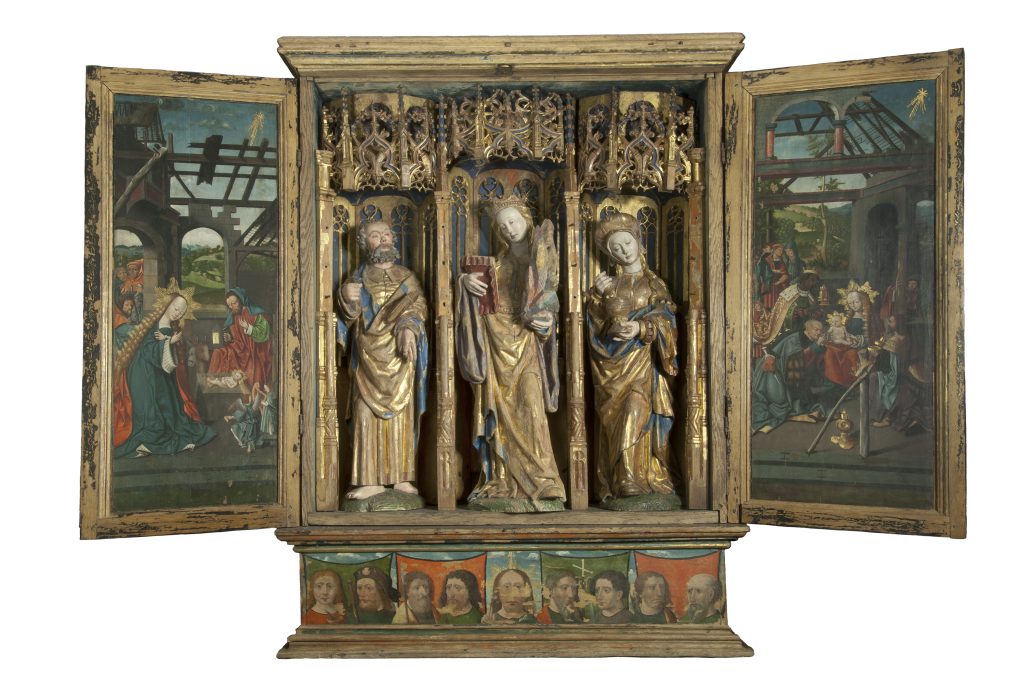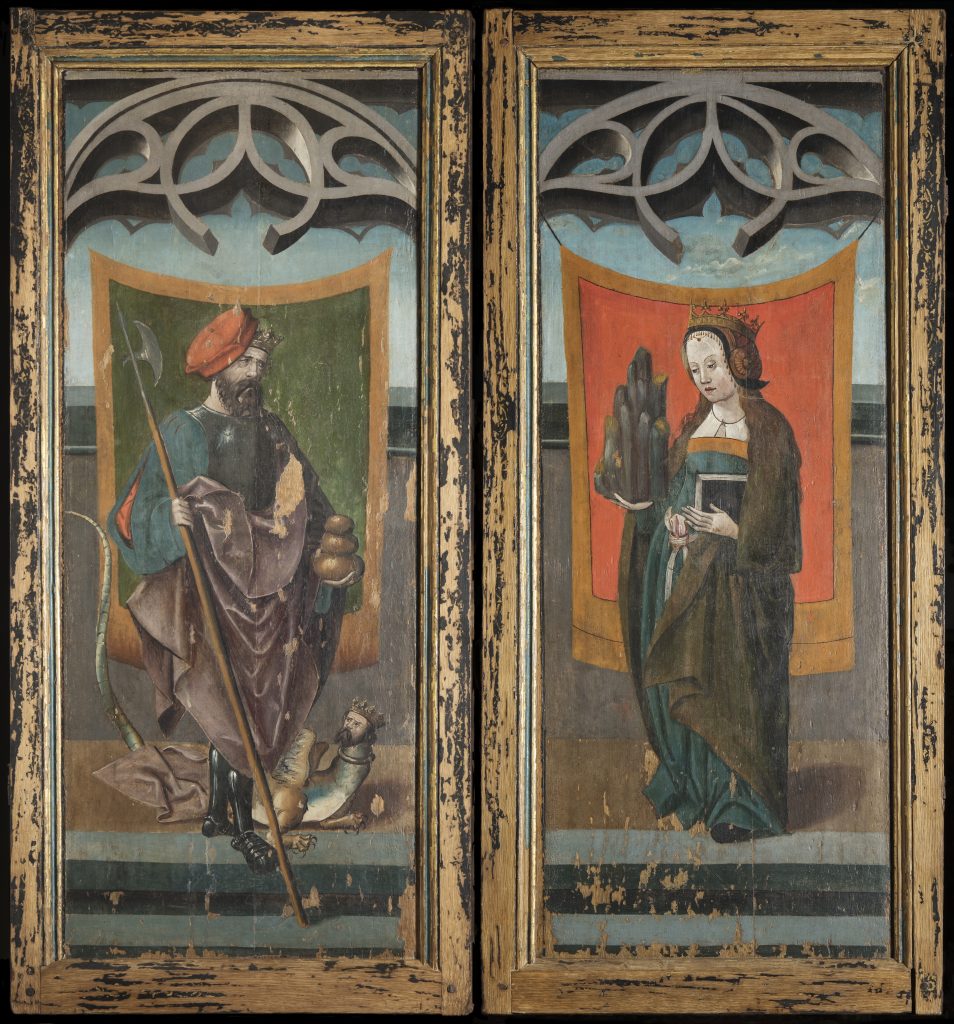This triptych from the medieval church of Austevoll on the island of Sandtorr, south of Bergen, is one of the best-preserved late Gothic altarpieces in Norway. Inside the central shrine are three chapel-like niches with richly traceried walls and intricate openwork baldachins that are filled with fully rounded, richly gilded sculptures. In the centre stands St Sunniva, an Irish queen who would have brought Christianity to Norway during the tenth century and found martyrdom on the island of Selja. Her relics were kept in Bergen cathedral since 1170, and she was regarded the patron saint of that city and of western Norway. The Sunniva figure is crowned and holds a book in her right hand and a rock in het left. Sunniva is flanked by St Peter (left), whose key has disappeared, and St Mary Magdalen (right) with her attribute, an ointment jar. The expressive faces and the elegant attire and movement of the three figures, as well as the intricate traceries, are all of a high technical and artistic quality.

The wings carry lively painted scenes on the insides, showing the Birth of Christ in Bethlehem (left) and the Adoration of the Magi (right). The stable in which the events take place is represented as a decayed building in the Renaissance style. The exterior of the wings carry representations of St Olav (left) and St Sunniva (right) standing before cloth hangings, a sign of distinction, under painted traceries. The paintings on the outsides of the wings are executed in a different, more modest style. The predella, which was painted by a different hand, features the expressive heads of Christ and the twelve apostles against backgrounds in varying colours. Remarkably, the apostles’ row extends over the short sides.

In 1911, Bendix Bendixen connected the style of the paintings on the wings’ insides to the Northern Netherlands, particularly to the work of the Amsterdam artist Jacob Cornelisz van Oostsanen (c. 1470-1533). In 1936, Eivind Engelstad assumed that the altarpiece had originated in the Northern Netherlands or on the Lower Rhine, an ascription which Jaap Leeuwenberg at the Rijksmuseum in Amsterdam pinpointed further to Utrecht in 1959. These attributions were recently confirmed by Kristin Kausland, who studied the form and construction of the shrine, which largely correspond with the triptych from Eksingedal, also in the Bergen collection (MA 608). Despite the central presence of the saints in the Austevoll altarpiece, it was accepted by the Protestants, who even transferred it to the new church built on Hundvåko Island in around 1650.
Northern Netherlands (Utrecht, Amsterdam?), 1510-1520
From Austevoll (Sunnhordland), in the museum since 1891
Oak, polychromy, painting
H 166 x W 223 x D 36 cm (opened), W 113 cm (closed)
Inv. no. MA 283
